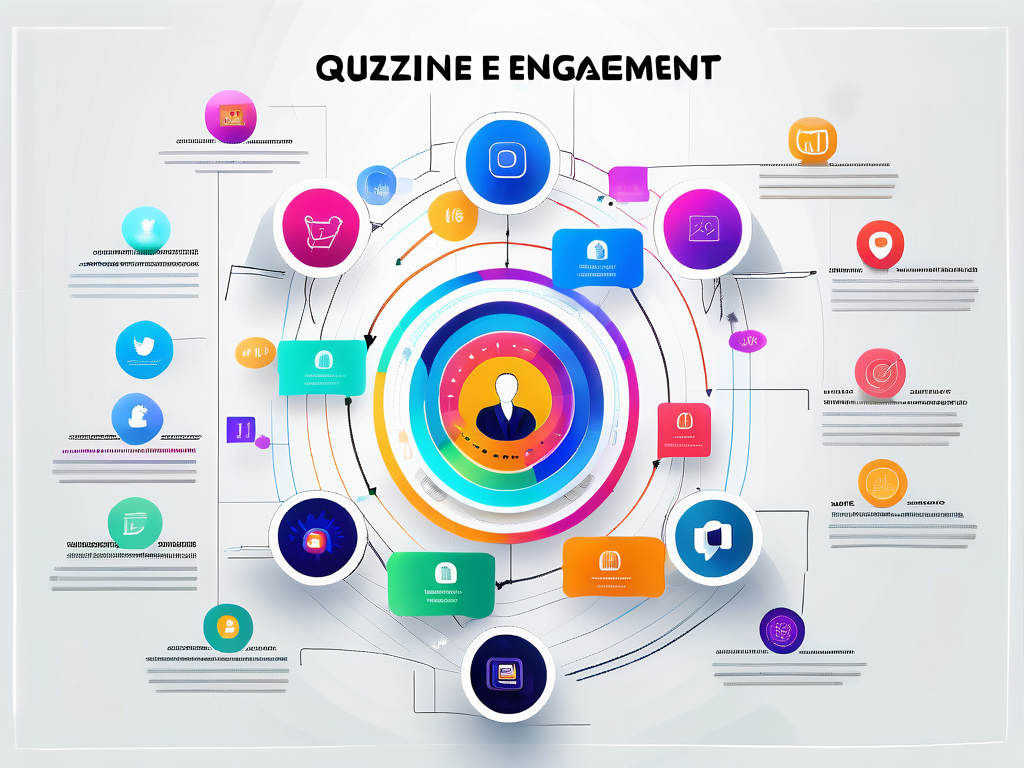
In the ever-evolving landscape of financial services, standing out from the crowd has never been more crucial. Amidst a sea of competitors, content marketing emerges as a beacon of differentiation, guiding firms towards establishing trust, authority, and a unique brand voice. But how does one navigate this complex terrain? Let’s dive into the world of content marketing within financial services, exploring its nuances through vivid examples and actionable insights.
THE ESSENCE OF CONTENT MARKETING
At its core, content marketing in the financial sector is about crafting stories that resonate. It’s not merely about broadcasting services but about connecting on a human level, addressing pain points, aspirations, and the financial journey of your audience.
Why It Matters More Than Ever
In an age where information is at everyone’s fingertips, consumers have become more discerning. They look for authenticity, clarity, and value in their interactions with financial brands. Content marketing offers a platform to meet these expectations, providing a mix of educational, informative, and engaging content that speaks directly to the needs of your audience.
Moreover, in a field often perceived as dry or complex, content marketing injects a dose of relatability, breaking down barriers and fostering a sense of community and trust between financial service providers and their clients.
Visual Storytelling: A Case Study
Consider the approach taken by a leading online investment platform. Recognizing the power of visuals, they launched a series of infographics explaining investment principles in a simple, engaging manner. This not only demystified investing for beginners but also positioned the platform as an accessible, user-friendly service.
The success of this strategy underscores the importance of visuals in content marketing. By presenting information in an easily digestible format, financial services can enhance comprehension and retention, making complex concepts approachable to a wider audience.
STRATEGIES THAT RESONATE
Developing a content marketing strategy that resonates requires a deep understanding of your audience and the unique value your financial service offers. It’s about finding the intersection between your expertise and the needs or interests of your clients.
Identifying Your Audience
Before embarking on content creation, it’s crucial to define who your audience is. Are they seasoned investors, or are they new to managing their finances? Understanding their challenges, goals, and preferences will inform the type of content you produce and the channels through which you distribute it.
For instance, a financial advisory firm targeting high-net-worth individuals might focus on content that explores advanced investment strategies, estate planning, and tax optimization, distributed through newsletters and private webinars.
Content Types That Click
From blog posts and articles to videos and podcasts, the format of your content should align with the preferences of your target audience. A survey conducted by a fintech startup revealed that their audience preferred short, animated videos for learning about new financial tools, leading to a pivot in their content strategy that significantly increased engagement.
This example highlights the importance of flexibility and responsiveness in content marketing. By staying attuned to the evolving preferences of your audience, financial services can ensure their content remains relevant and engaging.
Building Trust Through Transparency
Transparency is key in the financial services industry. Clients want to feel confident that their financial well-being is in good hands. By incorporating transparency into your content marketing strategy, you can build trust and credibility with your audience.
One way to achieve this is by creating content that explains complex financial concepts in simple terms, demystifying jargon and empowering clients to make informed decisions. Additionally, sharing case studies and success stories can showcase your expertise and track record, reinforcing trust in your services.
THE ROLE OF SEO IN FINANCIAL CONTENT MARKETING
Search engine optimization (SEO) plays a crucial role in ensuring your financial content reaches its intended audience. By optimizing your content for relevant keywords and following SEO best practices, you can improve your visibility in search engine results and attract organic traffic to your website.
Keyword Research and Implementation
Conducting thorough keyword research is the first step in optimizing your financial content for search engines. Identify relevant keywords and phrases that your target audience is likely to use when searching for financial services. Incorporate these keywords strategically into your content, including in headings, meta descriptions, and throughout the body of your text.
However, it’s essential to maintain a natural flow in your writing and avoid keyword stuffing, as search engines prioritize high-quality, user-friendly content.
Optimizing Technical Elements
In addition to keyword optimization, pay attention to technical SEO elements that can impact your content’s visibility. Ensure your website is mobile-friendly, as an increasing number of users access financial information on their smartphones and tablets. Improve page loading speed, optimize images, and use descriptive URLs to enhance the user experience and signal to search engines that your content is valuable and relevant.
ENHANCING ENGAGEMENT THROUGH INTERACTIVE CONTENT
Interactive content offers a dynamic and engaging way to connect with your audience, encouraging active participation and prolonged interaction with your brand. In the financial services sector, interactive tools and resources can educate, entertain, and guide users through complex financial decisions.
Calculators and Simulators
Providing interactive calculators and simulators on your website can help users visualize different financial scenarios and understand the potential outcomes of their decisions. For example, a retirement savings calculator can allow users to input their age, income, and savings goals to estimate their retirement fund’s growth over time.
By offering these tools, financial service providers can empower clients to make informed decisions, while also showcasing their expertise and commitment to client education.
Quizzes and Assessments
Quizzes and assessments are another interactive content format that can drive engagement and provide personalized insights to users. A risk tolerance quiz, for instance, can help individuals understand their comfort level with investment risk and guide them towards suitable investment options.
These interactive experiences not only make the content more enjoyable and memorable but also enable financial firms to gather valuable data about their audience’s preferences and behaviors, informing future content strategies.
MEASURING SUCCESS
As with any marketing effort, the success of content marketing in financial services is measured by its impact on business goals. Whether it’s increasing brand awareness, generating leads, or enhancing customer loyalty, setting clear objectives is the first step towards meaningful measurement.
Key Performance Indicators (KPIs)
Tracking the right KPIs is essential for gauging the effectiveness of your content marketing strategy. Metrics such as website traffic, engagement rates, conversion rates, and social media shares offer insights into how well your content is resonating with your audience.
For example, a wealth management firm might track the number of appointments scheduled through content-driven landing pages as a direct indicator of content’s role in lead generation.
Adapting and Evolving
Content marketing is not a set-it-and-forget-it endeavor. It requires ongoing analysis, experimentation, and adaptation. By regularly reviewing your content’s performance and staying abreast of industry trends, financial services can refine their strategies to better meet the needs of their audience and the goals of their business.
In conclusion, content marketing holds immense potential for financial services willing to invest in understanding their audience and crafting compelling, valuable content. Through strategic planning, creative execution, and continuous optimization, financial firms can build lasting relationships with their clients, setting the stage for sustained growth and success.
Ready to elevate your financial brand’s narrative and distinguish yourself in a competitive market? At Real News PR, we specialize in transforming your insights into compelling stories that resonate with your audience. With our unique blend of content creation, public relations, and media expertise, we’re equipped to showcase your expertise and position you as an industry leader. Don’t just take our word for it; experience the Real News PR difference and Unlock Your Story’s Potential Now.




